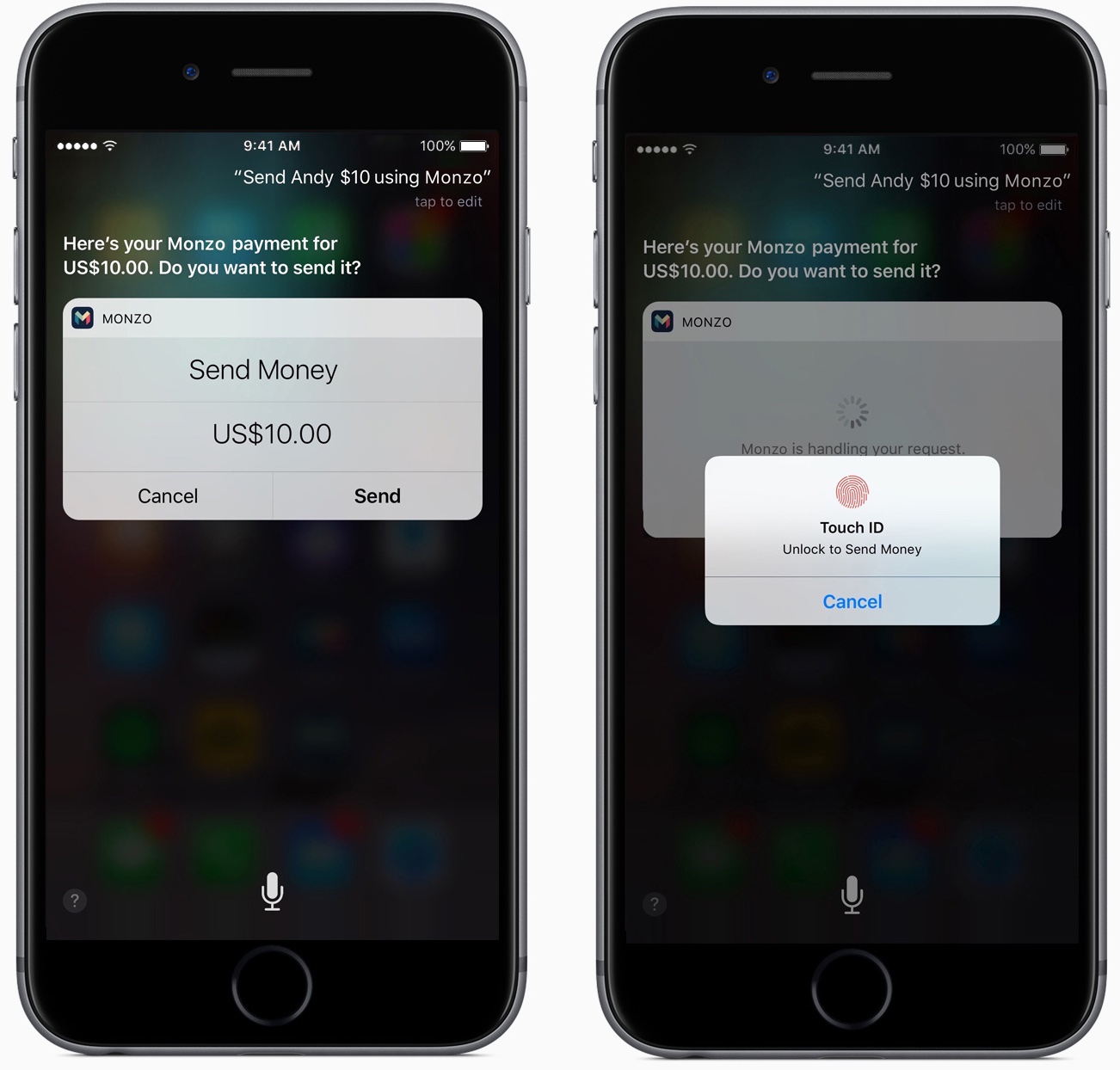In addition to beefing up App Store quality control by removing poorly maintained apps and those with 50+ characters in their name starting September 7, Apple also updated the official App Store Review Guidelines with details on app subscriptions, SiriKit and downloadable iMessage content. “As you plan and develop your apps for the upcoming releases of iOS 10, macOS Sierra, watchOS and tvOS, make sure to read these updated guidelines,” writes Apple.
SiriKit
Here’s the new section covering SiriKit, a new iOS 10 framework to allow certain types of apps to integrate with Siri by registering actions (“intents” in Apple talk) with the system.
(i) Apps integrating SiriKit should only sign up for intents they can handle without the support of an additional app and that users would expect from the stated functionality. For example, if your app is a meal planning app, you should not incorporate an intent to start a workout, even if the app shares integration with a fitness app.
(ii) Ensure that the vocabulary and phrases in your plist pertains to your app and the SiriKit functionality of the intents the app has registered for.
(iii) Resolve the Siri request in the most direct way possible and do not insert ads or other marketing between the request and its fulfillment. Only present interstitial UI when required to complete the task (e.g. asking the user to specify a particular type of workout).
Downloadable iMessage content
As you know, iOS 10’s much-enhanced Messages app now has a built-in App Store where users can find downloadable stickers and iMessage extensions, also known as “iMessage Apps”. Apple notes that Messages stickers and iMessage extensions “may show the user experience in the Messages app” much like video previews on the App Store let you see an app or game in action before you hit the Download button.
“You can add narration and video or textual overlays to help explain anything that isn’t clear from the video alone,” writes the company. In another section that covers Data Collection and Storage, Apple explains that downloadable stickers and iMessage extensions must have a privacy policy.
There’s an entire section dedicated to stickers, too.
Stickers dos and don’ts
“Stickers are a great way to make Messages more dynamic and fun, letting people express themselves in clever, funny, meaningful ways,” reads the document. “Whether your app contains a sticker extension or you’re creating free-standing sticker packs, its content shouldn’t offend users, create a negative experience, or violate the law.”
Apple provides some examples of acceptable sticker content:
(i) In general, if it wouldn’t be suitable for the App Store, it doesn’t belong in a sticker.
(ii) Consider regional sensitivities, and do not make your sticker pack available in a country where it could be poorly received or violate local law.
(iii) If we don’t understand what your stickers mean, include a clear explanation in your review notes to avoid any delays in the review process.
(iv) Ensure your stickers have relevance beyond your friends and family; they should not be specific to personal events, groups, or relationships.
(v) You must have all the necessary copyright, trademark, publicity rights, and permissions for the content in your stickers, and shouldn’t submit anything unless you’re authorized to do so. Keep in mind that you must be able to provide verifiable documentation upon request. Apps with sticker content you don’t have rights to use will be removed from the App Store and repeat offenders will be removed from the Developer Program. If you believe your content has been infringed by another provider, submit a claim here.
Subscriptions
Lastly, Apple defines permissible uses for recurring app subscriptions it announced back in June. Auto-renewable In-App Subscriptions are now available across all app categories, with some of the provided examples covering such cases as:
- New game levels
- Episodic content
- Multi-player support
- Apps that offer consistent, substantive updates; access to large collections of, or continually updated, media content; software as a service (“SAAS”); and cloud support
Some of the permissible uses for auto-renewing app subscriptions include:
Subscriptions may be offered alongside a la carte offerings (e.g. you may offer a subscription to an entire library of films as well the purchase or rental of a single movie).
You may offer a single subscription that is shared across your own apps, but these subscriptions may not extend to third party apps or services. Subscriptions must work on all of the user’s devices where the app is available. Learn more about sharing a subscription across your apps.
Apps must not force users to rate the app, review the app, download other apps, or other similar actions in order to access functionality, content, or use of the app.
As with all apps, those offering subscriptions should allow a user to get what they’ve paid for without performing additional tasks, such as posting on social media, uploading contacts, checking in to the app a certain number of times, etc.
Subscriptions may not include consumable credits, gems, in-game currencies, etc., even when combined with other offerings, but you may offer subscriptions that include access to discounted consumable goods (e.g. a platinum membership that exposes gem-packs for a reduced price).
If you are changing your existing app to a subscription-based business model, you should not take away the primary functionality existing users have already paid for. For example, let customers who have already purchased a “full game unlock” continue to access the full game after you introduce a subscription model for new customers.
The refreshed document states that users should not be able to inadvertently subscribe to “multiple variations of the same thing” and that apps should clearly describe what the user will get for their subscription (How many issues per month? How much cloud storage? What kind of access to your service?) and so forth.
You can read the updated App Store Review Guidelines on Apple’s website.
Source: Apple
